|
||||||||||||||||||||||||||||||||||||||
Tag: 2014
Year-end message from SBPMat’s President.
Dear members of the Brazilian Material Research Society (SBPMat),
This year-end message is, above all else, an appreciation of everyone who has contributed to the major progress of the materials research in Brazil, as well as to SBPMat’s development and strengthening.
2014 was another year of achievements and accomplishments for SBPMat. The event held in João Pessoa was a great proof of that. There were over 2,000 papers registered, with huge attendance rates in all symposia, and a high portion of young researchers and students. The participation was remarkable, both numerically and in terms of quality; the internationalization degree was another highlight of the event. We could not forget to express our gratitude to Professors Iêda Maria Garcia dos Santos and Severino Jackson Guedes de Lima, in recognition for the excellent work they performed by organizing the 2014 SBPMat Meeting.
The release of the document “Science Impact – Materials research in Brazil” was another great achievement for SBPMat in this year of 2014, in addition to the progress of the “University Chapters” program, which has been coordinated by Professor Rodrigo Fernando Bianchi. In these activities, as in all others, there was always the invaluable contribution of the entire SBPMat Directors and Counselors. The success of the SPBMat Newsletter, conducted so efficiently, proves the increasing interest in SBPMat, both in Brazil and abroad.
We wish everyone a Merry Christmas and a 2015 full of accomplishments and success.
Professors Edgar Zanotto and Victor Pandolfelli joined the ranks of the members of the Brazilian National Academy of Engineering.
Professors Edgar Dutra Zanotto and Victor Carlos Pandolfelli, members of the Brazilian Materials research community, were elected to join the ranks of the full members of the Brazilian National Academy of Engineering (ANE) and were sworn, with other 25 engineers, on November 27, 2014, at the Auditorium of the Navy Arsenal in Rio de Janeiro.
By electing full members, ANE honors and recognizes great talents in the professional field by highlighting them as examples and a sources of inspiration for future generations.
Zanotto and Pandolfelli are full Professors of the Materials Engineering Department (DEMa) of the Federal University of São Carlos (UFSCar), Brazil.
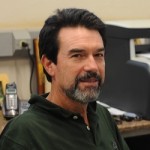
Edgar Zanotto is a Materials Engineer by UFSCar, Master in Physics from the University of São Paulo (USP), Brazil, and PhD in Glass Technology from the University of Sheffield (United Kingdom). At UFSCar, he coordinates the Vitreous Materials Laboratory (LaMaV), established by him in 1977. Amongst many distinctions, he is a Commander of the National Order of Scientific Merit and member of the Brazilian Academy of Sciences (ABC), the World Academy of Ceramics (WAC) and the World Academy of Sciences for the Advancement of Science in Developing Countries (TWAS). In addition to several executive and advisory positions, he is the Director of the Center for Research, Technology and Education in Vitreous Materials (CeRTEVE). Zanotto holds a 1 A-level fellowship for research productivity in the National Council for Scientific and Technological Development (CNPq), and has focused his research work into themes related to glass and glass-ceramics. Zanotto is one of the founders of SBPMat.
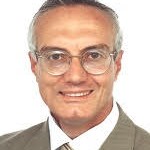
Victor Carlos Pandolfelli earned his undergraduate and Master’s degrees in Materials from DEMa – UFSCar, and his PhD in Materials from the University of Leeds (United Kingdom). Pandolfelli is a member of the advisory board of the World Academy of Ceramics (WAC), member of the Brazilian Academy of Sciences and the American Ceramic Society, and visiting Professor of the Wuhan University of Science and Technology (China), to name a few of his many distinctions. He is the Latin-American coordinator of the Federation for International Refractories Research and Education (FIRE), an organization comprising universities in different countries and major companies in the field of refractories. Since 1993, he coordinates the ALCOA (Aluminum Company of Americas) Laboratory at UFSCar. Pandolfelli also holds a 1 A-level fellowship for research productivity in CNPq. Among his main research topics, it is worth mentioning high temperature ceramic materials.
About ANAE
ANE recognizes that the country’s sovereignty, as well as the welfare and security of its population, critically rely on competent, innovative, ethical engineering, concerned about meeting the needs of all segments of society – taking into account the sustainability of the civilization, while based on long term global prospects.
SBPMat newsletter – year 1, issue 11.
|
||||||||||||||||||||||||||||||||||||||||||||||||||||||
Biomaterials in event hold by UC from Bauru.
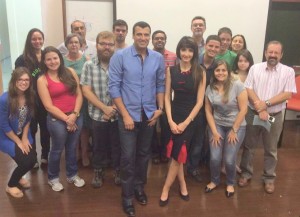
The University Chapter Biomaterials (UCB), headquartered in Bauru (city in the state of Sao Paulo) held its seventh monthly meeting in the morning of November 19th, in the São Paulo State University (UNESP). In that occasion, two foreign researchers who were in Bauru delivered seminars in the meeting.
Professor Ana Maria Pires Pinto from Universidade de Minho (Portugal) lectured about new concepts for biomedical applications of metallic matrix composites. Next, nanomedicine in situ was the topic of the seminar given by professor Tolou Shokuhfar, from Michigan Technological University (U.S.A.).
“The researchers were in contact with our group and we were highly complimented by them”, says Diego Rafael Nespeque Correa, president of UCB and PhD Researcher in the UNESP Post-graduate program in Materials Science and Technology. “We managed to maintain an environment of substantial scientific discussions and promotion of our group”, he adds.
UCB is of the five current units of the SBPMat University Chapters Program.
UCB Facebook: https://www.facebook.com/
About SBPMat University Chapters Progran: http://sbpmat.org.br/en/university-chapters/
First SBPMat UC from the south of Brazil.
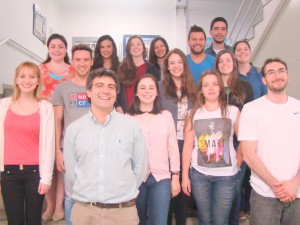
The SBPMat University Chapters program has its first unit in Rio Grande do Sul, since the end of October 2014. Headquartered in the University of Caxias do Sul (UCS), this UC has 14 participants, who are connected to UCS, the Federal University of Santa Maria (UFSM), and the Federal University of Rio Grande do Sul (UFRGS).
“What motivated me and all who are part of our UC was the possibility to generate other partnerships and add valuable knowledge”, says Bruna Louise Perotti, president of the UC, Mechanical Engineering student and scientific initiation fellow connected to the UCS Post-graduate program in Engineering and Materials Science. The group has plans for the next semester: organize lectures and seminars (initially with local lecturers and afterwards with visiting lecturers) and carry out scientific events to promote the interaction and collaboration between contributing research groups, generating innovation in the assignments, andfinally contribute to promote them.
Featured paper: “Green” nanoparticles for water treatment.
The scientific paper by members of the Brazilian community on Materials research featured this month is: “Green” colloidal ZnS quantum dots/chitosan nano-photocatalysts for advanced oxidation processes: Study of the photodegradation of organic dye pollutants. Alexandra A.P. Mansur, Herman S. Mansur, Fábio P. Ramanery, Luiz Carlos Oliveira, Patterson P. Souza. Applied Catalysis B: Environmental, 158–159 (2014), 269–279. DOI:10.1016/j.apcatb.2014.04.026.
“Green” nanoparticles for water treatment
A group of researchers from Brazilian institutions developed nanoparticles that are triply “green”. They can be used to purify water, one the greatest global challenges of the 21st Century. In addition to that, they coexist harmonically with the environment and biological systems. Finally, they are produced by means of an eco-friendly process.
“We managed to integrate properties and characteristics rarely found in nanostructured systems, which are biocompatibility and environmental compatibility, using a ‘green’ process”, says Professor Herman Sander Mansur from the Federal University of Minas Gerais (UFMG).
The particles are formed by “quantum dots” (fluorescent semiconductor nanocrystals) of zinc sulfide (ZnS) with approximately 3.8 nm in size, coated with “shells” made of chitosan – an abundant, low-cost material, derived from the external skeleton of crustaceans such as shrimps and crabs. The synthesis process of these particles is completed in a single stage, carried out in an aqueous medium, without using toxic substances.
In a study performed by the research team, the nanoparticles displayed the capacity to degrade contaminant organic pigments usually found in water, using only light, including direct sunlight.
“The results were very promising, since we were able to observe that the system was effective for the photodegradation of organic contaminants found in the aqueous solutions we studied,” said Herman Mansur, who is the corresponding author of a paper about the research, recently released by the journal Applied Catalysis B: Environmental.
The research will also be the subject of a patent application, which the authors already started writing. “The following step will be searching potential partners in the private sector, in order to commercialize it as a product for cleaning waters which are polluted by organic pigments”, says Mansur.

History of the paper
It was during scientific discussions occurred in the monthly meetings of the Exact Sciences and Materials Board of the Minas Gerais State Research Foundation (FAPEMIG) that the initial idea for the research came up. In fact, both, Herman Mansur, coordinator of the UFMG Nanosciences, Nanotechnology and Innovation Center, and Luis Carlos de Oliveira, coordinator of the research group in Advanced Materials for Catalysis and Photocatalysis in the same university, were members of said advisory committee between February 2010 and the same month in 2014. According to Mansur, “the main idea was to use nanotechnology to develop innovative environmental solutions to clean up water, as it is an increasingly scarce resource in the world, whether in developed or emergent countries, as well as the ones with low social and economic development”.
Then, the professors prepared a project that combined the experience from the two research groups: Professor Mansur’s team, dedicated for twenty years to the development of nanomaterials and nanostructures by means of the synthesis of quantum dots, and Professor Oliveira’s group, which had been working in the field of chemical catalysis, searching sustainable solutions for the treatment of industrial waste.
Their initial research led to a first article on nanoparticles with cadmium sulfide (CdS) core and niobium oxide shell: L. C Oliveira et. al. One-pot Synthesis of CdS@Nb2O5 Core-Shell Nanostructures with Enhanced Photocatalytic Activity. Applied Catalysis. B, Environmental, v. 152:53, p. 403-412, 2014 (DOI:10.1016/j.apcatb.2014.01.025).
As a result, the group conceived, designed and developed an application for the concept of “green chemistry” in the whole project, producing zinc sulfide and chitosan particles, and their synthesis process. In the following stage, their research also incorporated the collaboration of Professor Patterson P. Souza, from the Federal Center for Technological Education of Minas Gerais (CEFET-MG), who conducted mass spectrometry tests, assessing the degradation of the organic pigments used as models for the polluting chemical species.
Interview with the winner of the honorable mention of the 2014 CAPES award for best thesis in the field of Materials.
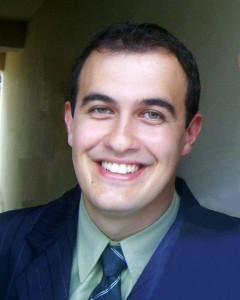
The honorable mention of the Award 2014 for best Thesis in the field of Materials granted by CAPES (the Brazil´s Federal Agency for the Support and Evaluation of Graduate Education) was given to Augusto Batagin Neto for his doctoral thesis, “Simulation of the spectroscopic and structural properties of organic materials for application in devices”, defended in 2013 in the São Paulo State University (UNESP). The research was advised by Professor Carlos Frederico de Oliveira Graeff.
The result of the Capes Award 2014 was released in early October. The award ceremony will be held on December 10, 2014, in Brasília.
Read our interview with Augusto.
SBPMat Newsletter: – Could you tell us briefly about how your interest in science started, and what were the most important moments in your academic career so far?
Augusto Batagin Neto: – My interest in science started at an early age, since I was a child I was interested in studying “phenomena” associated to natural sciences. I remember that my sister and I used to try and catalogue different species of ants, according to the size of their bodies and other characteristics. I always received a lot of encouragement from my parents and siblings, in my family life there was always an environment that called for dialogue, arguments, the exchange of ideas, which was, and still is, the basis for my education, in every sense.
Up to this moment, there were many moments that I consider very important for my career, first of which was deciding to enroll in the undergraduate course of Physics. I chose the Physics course exactly because it used to be the hardest subject for me during High School (I believe the lack of actual graduates in Physics teaching it in the public education system was one of the main reasons for my initial struggle). A second major moment was starting my research initiation in UNESP at Bauru. By the end of the second semester, Professor Francisco Carlos Lavarda, from the UNESP Physics Department, invited me to enter a training course that was mainly intended to prepare students in the first years of their undergraduate studies to make and interpret electronic structure calculations. We started the activities, and then, I was granted my very first scholarship from the São Paulo State Research Foundation (FAPESP). In my opinion, the support offered by such an excellent development agency, especially in this field, is vitally important to encourage the production of new human resources in research, and so it was in my case.
Important moments are not always the easiest. A third moment I consider extremely important in my career/education was conducting all my Master’s studies without any scholarship whatsoever. In the occasion I took and passed a public exam held by the State Department of Education of São Paulo to work as a basic education teacher, so I was both preparing my Master’s and teaching in the public education system. I completed all mandatory subjects for the Master’s during my first year in order to conduct the research more calmly in the city where I had to hold the teaching position.
There is no doubt that another moment of great importance was starting my doctoral studies with Professor Carlos Frederico de Oliveira Graeff, from UNESP -Bauru Physics Department, as my advisor, under the graduate program in Materials Science and Technology. During that time I discovered different theoretical and experimental issues and could mature as a researcher. Still during my doctoral studies, I had the opportunity to hold a scholarship from the Eindhoven University of Technology (TUe), in the Netherlands, advised by Professor Peter Arnold Bobbert, an experience that enabled me to be acquainted with different simulation techniques and complement my basic training.
The last moment I consider important was being hired as an assistant professor in the UNESP Experimental Campus at Itapeva. I was born in this city and now have the chance to ensure that my work is able to help bringing human resources and technology to this region.
SBPMat Newsletter: – Why did you start to do research in the field of Materials?
Augusto Batagin Neto: – I was introduced to the field of Materials during my research initiation, engaged in the study of biomolecules, while in my Master’s I started studying the structural and optical properties of polymers, and then, in my doctoral studies, I expanded my research field to examine transport and magnetic properties of organic materials.
I always found the use of simulation tools for the study of materials properties interesting, because I believe that such inquiries may bring major scientific contributions, both in regard to basic science (discussing new processes/related phenomena) as from a technological perspective (proposing materials/devices with improved properties).
SBPMat Newsletter: – In your opinion, what is the main contribution of your award-winning thesis?
Augusto Batagin Neto: – Generally speaking, the series of studies presented in my thesis contribute to different areas involving the application of organic materials in the manufacturing of devices.
In regard to the study of dosimetric systems based on organic polymers solutions, the results allow us to identify which structural and electronic properties are desirable in high sensibility systems.
As for the study of synthetic melanins, the work points out what is the source of the paramagnetic centers observed in those systems, which may deeply influence the transport properties of said biomaterial. In addition to that, the reactivity study provides information about the macrostructures that are most likely to be observed, a very controversial topic in the existing literature.
Using electronic structure calculations, it was also possible to suggest the occurrence of light-induced conformational changes in iridium complexes. These compounds are extensively deployed in the manufacturing of light-emitting devices, although they usually display a very short life cycle. Our results suggest that structural changes may arise from optically activate processes, followed by a charge transfer, indicating a possible route for the degradation of said complexes.
To conclude, the study also counted with simulations, aiming to model the experiment with electrically detected magnetic resonance by means of two different approaches: equivalent circuit and “drift-diffusion” equations. The results obtained allow us to better comprehend what are the effects to be expected from the occurrence of different resonant entities in the system. This result could, in principle, be used to distinguish spin-dependent transport properties related to electrons and holes in semiconductor devices.
SBPMat Newsletter: – What were the criteria that guided you to do a research recognized nationwide for its quality (the award-winning thesis)? To what factors do you attribute such achievement?
Augusto Batagin Neto: – The initial ideia was to comprehend a series of experimental phenomena under a more fundamental point of view, all directly or indirectly related to the application of different materials in optoelectronic devices. One of the criteria guiding the research was precisely to try and go a little further beyond the phenomenological description of the studied processes.
I attribute the success of the research to several factors, among which I highlight the atmosphere of intense scientific discussion in our group, led by Professor Carlos Graeff. In that moment, I was the only student in the group whose work was entirely theoretical, and the chance to discuss, propose theories and empirically test them was the distinguishing element in the conducted work, not only for the development of my thesis, but also in partnerships made all along my doctoral studies. I must also mention the assistance given by the POSMAT-UNESP/Bauru graduate studies program, especially Professor Francisco Lavarda, and the financial support received from CAPES and FAPESP, as well as the computational resources made available by GridUnesp as decisive factors for the execution of the project. Another factor to which I attribute the quality of the work conducted was the chance provided by the TUe-Netherlands scholarship; the scientific discussions I had during that period allowed me to expand the scope of the research I was already conducting and develop a distinguished work.
SBPMat Newsletter: – Would you like to leave a message for our readers who are preparing their own research initiation, master’s and doctoral papers in the field of Materials?
Augusto Batagin Neto: – I believe the constant development of our field of research in the country reflects the great potential of the human resources we hold. In my opinion, the quality of the intellectual work that has been developed in Brazilian laboratories is in no way inferior to the one coming from the international community. In this regard, the message I would like to send to everyone in our community is that we must seek to increase our visibility more and more, diffusing our research not only though traditional means, but also in varied forms of communication, including social media.
Interview with the winner of the 2014 CAPES award for the best thesis in the field of Materials.
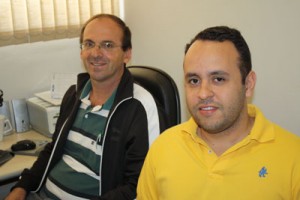
Luís Fernando da Silva is the winner of the 2014 award for best thesis in the field of Materials, granted by the Brazil´s Federal Agency for the Support and Evaluation of Graduate Education (CAPES). Luís Fernando´s Doctoral thesis, “Synthesis and characterization of SrTiO3 and SrTi1-xFexO3 compounds prepared by microwave-assisted hydrothermal method”, was defended in 2013 in the São Carlos School of Engineering at University of São Paulo (USP). The research was advised by Professor Valmor Roberto Mastelaro.
The result of the Capes Award 2014 was released in early October. The award ceremony will be held on December 10, 2014, in Brasília.
Read our interview with Luís Fernando.
SBPMat Newsletter: – Could you tell us briefly about how your interest in science started, and what were the most important moments in your academic career so far?
Luís Fernando da Silva: – My interest started during my undergraduate studies in Physics at the São Paulo State University (UNESP) at Bauru. I entered the research initiation program in my second year, and my project comprised the structural characterization of GaAs and GaN film, having Professor José Humberto Dias da Silva as my advisor, and receiving funds from the São Paulo Research Foundation (FAPESP). During my last undergraduate year, my work received an honorable mention in the USP research initiation symposium, which managed to motivate me further to enroll in a Master’s program in the field of Materials. Due to my interest in structural characterization, I started my Master’s studies at USP being advised by Professor Valmor R. Mastelaro, who is a reference nationwide in the field of X-ray absorption spectroscopy. My work consisted in preparing and characterizing amorphous and nanocrystalline StTiO3 and SrTi1-xFexO3 compounds. By the end of my Master’s studies, Professor Valmor Mastelaro proposed the challenge of synthesizing the SrTi1-xFexO3 compound using the hydrothermal-microwave method, considering that, up to that point, there was no record of its preparation by means of such method. After studying different parameters of its synthesis and characterizing the structural properties of the SrTiO3 compound, we started synthesizing the SrTi1-xFexO3, which we managed to do with great success. Both compounds were characterized using X-ray absorption spectroscopy (XANES and EXAFS) at the National Synchrotron Light Laboratory (LNLS), and the importance and originality of the results were accepted to be published by major journals in the field of materials: CrystEngComm (CrystEngComm, 2012,14, 4068-4073) and Physical Chemistry Chemical Physics (Phys. Chem. Chem. Phys., 2013,15, 12386-12393). In addition to that, according to the literature, the SrTi1-xFex03 compound has been successfully applied as a gar sensor, mainly for hydrocarbons and oxygen. Based on this application, Professor Valmor Mastelaro established a partnership with the microsensors group from Aix-Marseille University, in the city of Marseille, France. Thanks to said partnership, I received a scholarship to join the microsensors group for six months, counting with funds from the “Ciência Sem Fronteiras” (Science without borders) program. The results obtained were partially released by an important journal in the gas field, Sensors and Actuators B (Sens. Actuators, B, 2013, 181, 919–924). Currently in my Postdoctoral studies, I started a new research project, advised by Professor Elson Longo, in a partnership with Doctor Cauê Ribeiro from the instrumentation unit of the Brazilian Corporation of Agricultural Research (Embrapa), which comprises the study of photoactivated resistive gas sensors. Recently, I was granted a project to develop said research.
SBPMat Newsletter: – Why did you start to do research in the field of Materials?
Luís Fernando da Silva: – The field of Materials always fascinated me, since the time I spent in the research initiation program. The possibility of managing to synthesize a material, unveil its properties and use it for a technological application is challenging and fascinating at the same time.
SBPMat Newsletter: – In your opinion, what is the main contribution of your award-winning thesis?
Luís Fernando da Silva: – The main contribution of my thesis was the use of the x-ray absorption spectroscopy technique. The vast majority of existing articles in the literature report the method used to prepare the material and its application (gas sensor, photocatalysis, etc); however, there are only a few studies on its structural properties, restricted to the identification of the crystalline phases using the technique of x-ray diffraction. In my work, we could observe that materials (in my case, SrTiO3 and SrTi1-xFexO3) prepared using the hydrothermal-microwaves method, present substantial structural distortions. In addition to that, concerning the SrTi1-xFexO3 compound, we managed to analyze its detection properties against different gases (reductant and oxidant) in greater detail, since one of the most important parameters for a gas sensor is its selectivity.
SBPMat Newsletter: – What were the criteria that guided you to do a research recognized nationwide for its quality (the award-winning thesis)? To what factors do you attribute such achievement?
Luís Fernando da Silva: – Mainly my good relationship with the Doctoral advisor, Professor Valmor R. Mastelato, who gave me total freedom and credibility to develop this work, as well as important scientific contributions. Besides that, the infrastructure of the Center for the Development of Multifunctional Materials (CDMF/FAPESP) was crucial and allowed a proper and detailed characterization of the compounds studied in the thesis.
SBPMat Newsletter: – Would you like to leave a message for our readers who are doing research in undergraduate, master´s or doctoral level in the field of Materials?
Luís Fernando da Silva: – I believe that the main message is that before starting any research work (whether for initiation, master’s or doctoral studies), it is paramount for them to have pleasure doing their research and believe in the potential and quality of their work. If you believe the work you are developing has potential, you will seek your best to do it.
